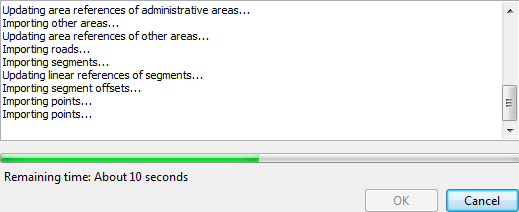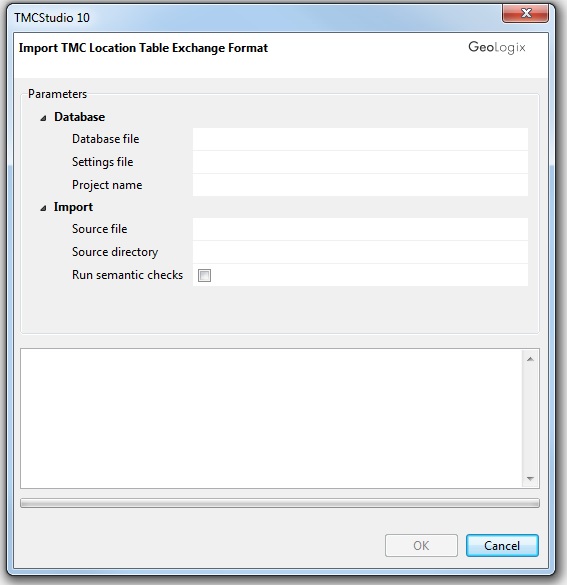Difference between revisions of "Import Location Table Exchange Format"
| Line 36: | Line 36: | ||
| − | ''' | + | '''Import''' |
| − | |||
| − | |||
| + | Depending on the location table format you are trying to import, select either source file or source directory. | ||
| + | |||
| + | If your Location Table file is a ZIP file (*.zip), click on the white space next to '''source file''', click on the folder icon and locate the ZIP. | ||
| + | |||
| + | If your Location Table consists of a number of DAT files (*.dat), click on the white space next to '''source directory''', click on the folder icon and locate the directory where your location table (consisting of a number of files in DAT format) is stored. The DAT files all have to be stored within one single folder. | ||
| + | |||
| + | As soon as a valid folder containing the necessary DAT files is selected, the name of the corresponding Location Table is shown in the lower part of the window (large white space). | ||
| − | |||
| − | |||
| − | |||
| − | |||
:[[file:window_ltshown_sd.png|link=|alt=]] | :[[file:window_ltshown_sd.png|link=|alt=]] | ||
Revision as of 15:33, 19 May 2016
The Import TMC Location Table Exchange Format window can be accessed in three different ways:
- Import Location Table Exchange Format into new database... from the welcome screen
- Toolbar →

In order to set up TMCStudio extract all contents from the received ZIP file to a directory of your choice. Note: The directory must be located on a local hard drive.
Open the directory and run TMCStudio.exe
This will open the window Import TMC Location Table Exchange Format
In the window, fill in all fields according to the instructions below to import a Location Table.
Database
Double click on the white space next to Database file.
Here you can enter a name for your database. The program will automatically turn it into a Firebird file (*.fdb).
Uppon specifying a database, an .ini file of the same name as the .fdb file will be created under Settings file.
The project also requires that it be given a name.
Once the import process has been completed, the project name will be stored in the .ini file and will appear in the list of projects when you open TCMStudio.
 Important Advice
Important Advice
- Please note that in either case, the database cannot be created on a network drive and/or server!
Import
Depending on the location table format you are trying to import, select either source file or source directory.
If your Location Table file is a ZIP file (*.zip), click on the white space next to source file, click on the folder icon and locate the ZIP.
If your Location Table consists of a number of DAT files (*.dat), click on the white space next to source directory, click on the folder icon and locate the directory where your location table (consisting of a number of files in DAT format) is stored. The DAT files all have to be stored within one single folder.
As soon as a valid folder containing the necessary DAT files is selected, the name of the corresponding Location Table is shown in the lower part of the window (large white space).
Run semantic checks
- It is highly recommended that you tick this option for every Location Table you import into your database!
- Visit the Semantic Checks page to learn more about this function.
Once all the data has been entered, the window should resemble this:
To start the data import, click the OK button.
Now your Location Table is being imported, the database tables created and the data checked. This may take some seconds.

As soon as this process is completed and in case you ran the import routine including the semantic checks, a list of check statements is shown.
Visit the Semantic Checks page to learn how to proceed.


